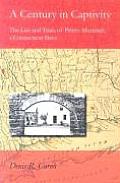Valuing the Philip Mortimer Estate’s Human Property
As quoted yesterday, executors Elihu Starr and George Phillips advertised for creditors and debtors to come settle their accounts with George Starr, acting as their attorney. And also for people to bring back any borrowed books.
In August 1795 the executors submitted Mortimer’s will and codicil to the probate court. The man’s estate was appraised at almost £5,000.
That legal paperwork included another list of the people Mortimer had enslaved, most of whom his will freed according to one schedule or another:
- Briston, aged 60, called Bristol in the will
- Jack
- Dublin, not mentioned in the will
- Prince, “sick with the yaws”
- Peter, “on board man of war and likely dead”
- Sophy, labeled a “girl” like the following two but old enough to have three sons; the Barbour collection says she was born in 1752
- Silvy, born 1773
- Peg, born 1777 as Margaret—though other documents estimate her to have been about 20 years old in 1794
- Lester, born 1787, first of three sons of Jack and Sophy
- Dick, born 1789 as Richard
- John, born 1790
- Rachel, a “girl child,” born 1793, perhaps the daughter of Hagar, mentioned in the will, or Amarillas, born 1770
Jack was valued at £10, Sophy and the three boys at £5 each. The women Silvy and Peg were each valued at £1. The other four men and the little girl were assigned a market value of zero. That makes sense for Peter, who was out of reach in at least one way, but those prices suggest the appraisers thought any purchaser would have a hard time compelling most of the other people to work, or getting more value out of them than the cost of maintaining them.
In contrast, back in 1740 the inventory of Daniel Jones of Colchester valued a “young man” and a “negro wench” at £150 each, “an old negro man” at £40, and a boy at £25. Two years later, Samuel Allyn of Windsor priced his “servants, Cyrus and William,” at £100 apiece.
Almost all of the people listed in Philip Mortimer’s inventory appear to have still been living on his estate or nearby, continuing their work in his ropewalk or fields or house. Indeed, Jack and Sophy had another baby, Charles, in 1795; the local vital records assigned him to the Mortimer household even though the patriarch was dead.
The one exception among those workers was Peter. Mortimer mentioned him in the 1792 will and 1794 codicil, meaning he was still in Middletown then. Had he left for the sea after the old man’s death? If so, he was exercising the freedom Mortimer promised, but the appraisers didn’t think that had turned out well for him.
The probate court accepted Philip Mortimer’s will. It even accepted his codicils, one unsigned and the other unwitnessed. Though he was in his tomb, the man’s wishes still carried some authority in Middlesex County, Connecticut.
But there was one wrinkle: George Starr asked the court to relieve him of his job as executor.
TOMORROW: That freed Starr to contest the will.






